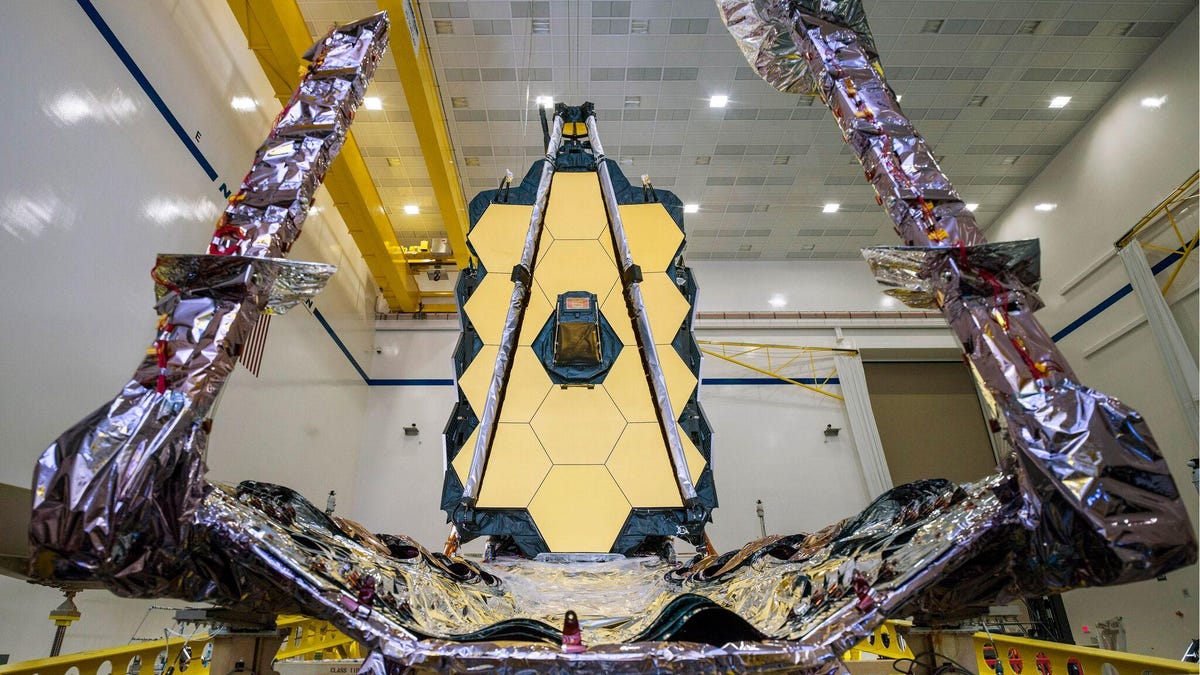Latest delay of NASA's James Webb Space Telescope launch is just spooky
Is it creepy to send a long-postponed spacecraft into the dark void on Halloween?

The James Webb telescope is feeling whole now.
It's the rare announcement that makes you want to laugh and cry at the same time.
The James Webb Space Telescope (JWST), NASA's successor to Hubble, has had its launch date officially pushed back once again. The next-generation observatory was once slated for blast-off in 2007. The latest target date is Halloween -- October 31 -- of 2021, NASA announced in a call with reporters Thursday.
JWST was most recently set to lift off from French Guiana in March 2021, but "technical challenges" and the coronavirus pandemic led to yet another postponement (this is at least the 13th delay over the years).
"The perseverance and innovation of the entire Webb Telescope team has enabled us to work through challenging situations we could not have foreseen on our path to launch this unprecedented mission," said Thomas Zurbuchen, associate administrator for NASA's Science Mission Directorate.
Once all testing is complete, the telescope will be literally folded up "origami style" and shipped to South America to prepare for launch on an Ariane 5 rocket. In orbit, it will unfold to its full size, which is about that of a tennis court.
When it finally becomes operational, JWST is expected to help greatly advance our understanding of the earliest periods of the universe's history and also look for signs of life on distant exoplanets.

